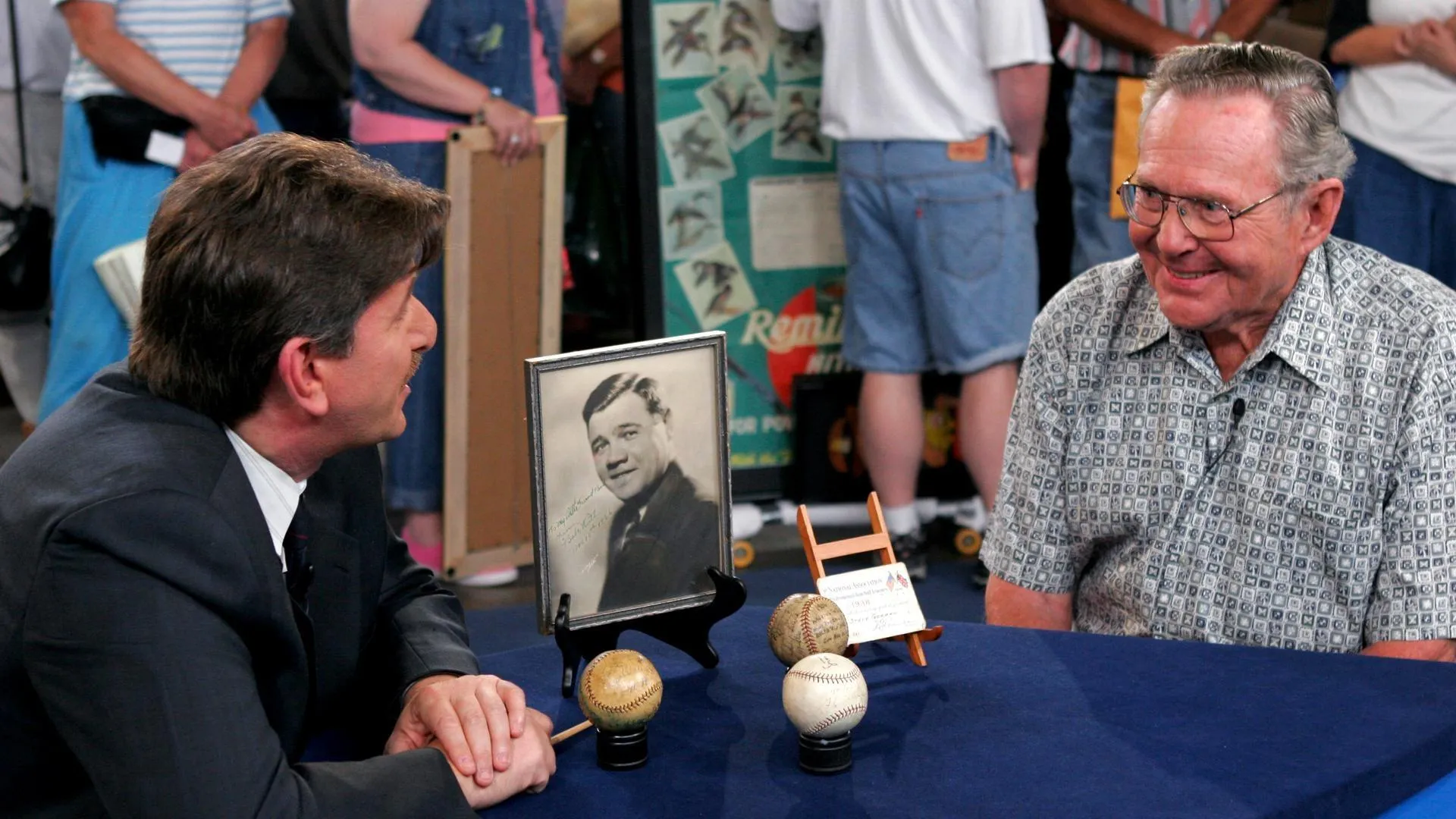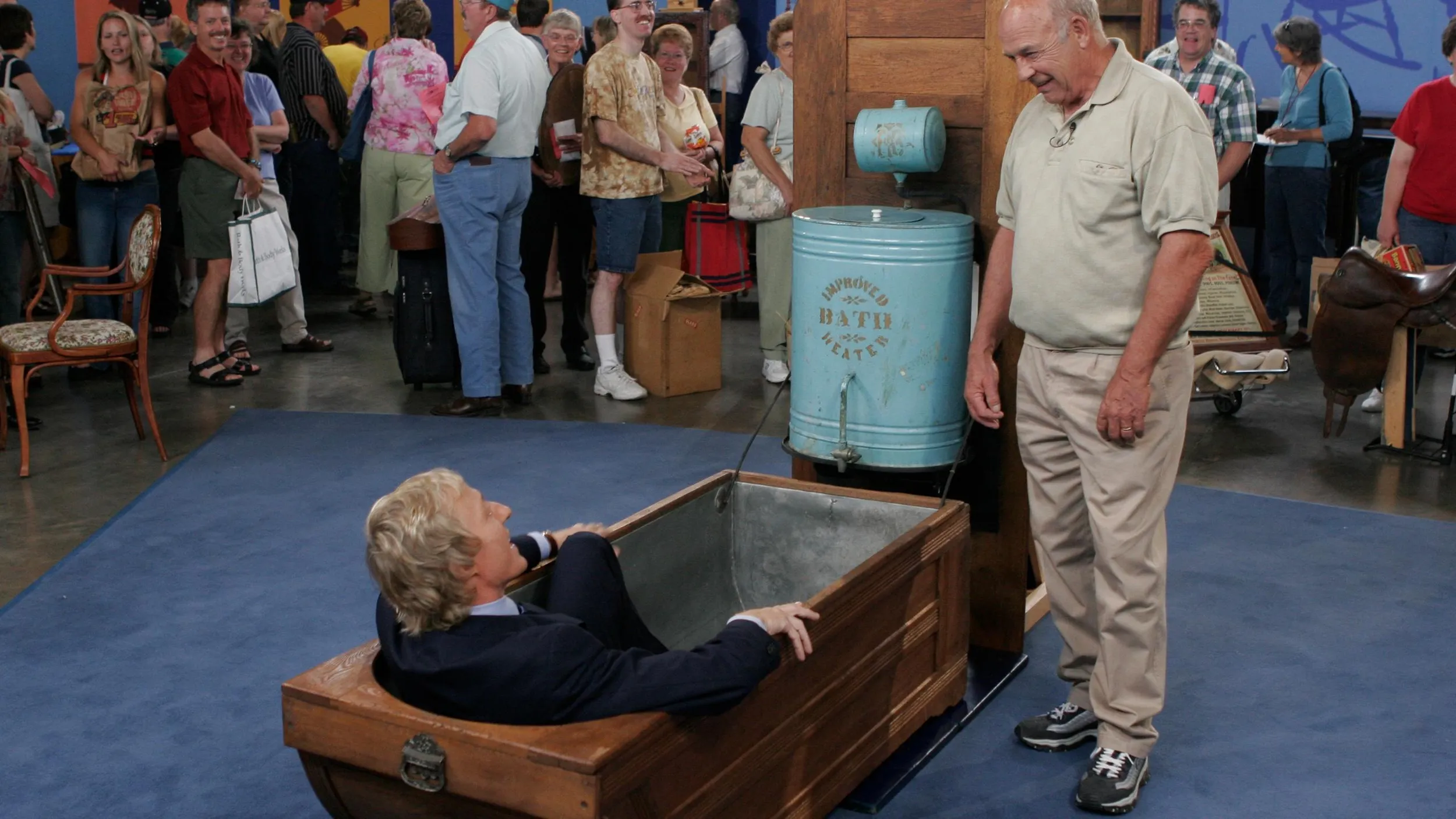GUEST: These were done for my great-aunt, who was a missionary down on the Standing Rock Reservation, which is just south of here. She was a missionary there from 1885 to about 1920. She was in charge of passing out commodities periodically, and before she would pass them out, she would tear out a ledger sheet, and then have the Indians draw her a picture. So I've had them since 1965, not knowing that I even had them until we were going through some of the old boxes, and they were just laying loose in the boxes, so finally we dug them out and I had them framed then.
APPRAISER: Well, they're nicely framed, and they're quite beautiful drawings. They're Plains pictograph drawings. This represents a sun dance. It's nice because it's dated, 1895, and it has the name, "Drawn at Little Eagle, South Dakota." It represents the brush arbor for the sun dance. The central sun dance pole. And it's beautiful because the warriors have all their society gear on. They have society lances, bandoliers. There's one warrior who seems to be pierced at the breast and actually performing the sun dance. There’s a couple back here that look like they're about ready to go on. The detail is just magnificent. The headdresses are beautiful. I think your ledger book drawings are a little bit earlier. They have a feel, pictorially, for, I'd say, 1870s to 1880s. This one is a magnificent drawing. Warriors used to prove their prowess by charging out in front of the cavalry. They'd run the line, they'd say. And a lot of times they'd get back. Sometimes they wouldn't get back. This guy, obviously, lived to tell the tale, because he probably drew this drawing. But he got shot twice, and his horse got shot about eight times. And his name was probably associated with the elk. I notice his name glyph up here is an elk. And all he's carrying into battle, he's got his pistol holstered, and he's carrying a coup stick. So he charged a whole line of guns with his coup stick. So a very brave warrior. This is a wonderful drawing, too. I suspect he's a cavalry man, but he could also be a Plains Indian scout. He's carrying a flag, but he has shot his horse, and he's counted coup with a quirt, which was very common. And he's got a very unusual name glyph. It's two horse tracks with bullets flying. They're absolutely beautiful pictographs. Have you ever had them appraised?
GUEST: I never have. I saw in a magazine one time where they had a similar thing, and this was about ten years ago, and I think they said that that time, they were $3,000.
APPRAISER: Mm-hmm. Well, I understand you have more at home, too.
GUEST: Right.
APPRAISER: I think your sun dance piece would easily sell at auction for about $8,000 to $12,000.
GUEST: Wow.
APPRAISER: And I think both your ledger pieces would probably bring about $4,000 to $6,000 each. So if you've got 16 more...
GUEST: Yeah.
APPRAISER: ...you've got quite a treasure trove. But at auction, you're talking probably about $16,000 to $24,000 in these three drawings.
GUEST: That's amazing. Oh... boy-- mm.












